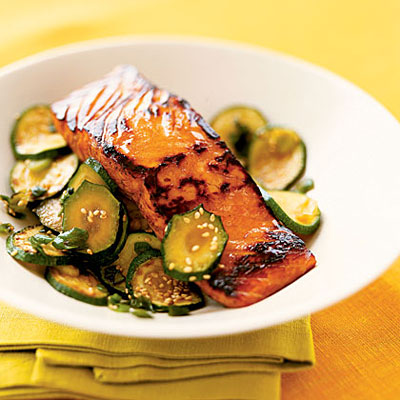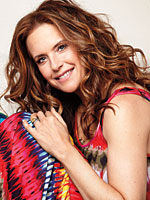FRIDAY, Aug. nineteen (HealthDay News) -- Complaints of celiac disease are on the increase within the us, with a lot of and a lot of folks growing sick from exposure to merchandise containing gluten.
Nearly 5 times as many folks have celiac disease nowadays than did throughout the Nineteen Fifties, in line with one recent study. Another report found that the speed of celiac disease has doubled each fifteen years since 1974 and is currently believed to have an effect on one in each 133 U.S. residents.
"It's quite widespread," said Dr. Alessio Fasano, director of the Center for Celiac Research and the Mucosal Biology Research Center at the University of Maryland School of Medicine. "We thought there were regional differences in the past, but now we know it's everywhere."
That increased incidence rate has left researchers scrambling to figure out why more people are developing the chronic digestive disorder. Doctors still can't explain the trend, but they are making some headway testing a number of hypotheses.
"There are many theories out there, not all independent of each other and not all of them true," Fasano said.
Celiac disease is an inherited autoimmune disorder that causes the body's immune system to attack the small intestine, according to the U.S. National Institutes of Health and the University of Chicago Celiac Disease Center. The attack is prompted by exposure to gluten, a protein found in such grains as wheat, rye and barley.
The disease interferes with proper digestion and, in children, prompts symptoms that include bloating, vomiting, diarrhea or constipation. Adults with celiac disease are less likely to show digestive symptoms but will develop problems such as anemia, fatigue, osteoporosis or arthritis as the disorder robs their bodies of vital nutrients.
Awareness of celiac disease has grown in recent years, evidenced by the growing number of gluten-free foods on the market. However, medical experts don't believe that the increase in celiac disease incidence can be chalked up simply to folks becoming more aware of the chronic digestive disorder or to improvements in diagnostic techniques.
Rather, the most popular potential explanations for the increase in celiac disease rates involve improvements in sanitation and hygiene in civilization overall, said Fasano and Carol McCarthy Shilson, executive director of the University of Chicago Celiac Disease Center.
According to the "hygiene hypothesis," Shilson said, people in industrialized countries are more at risk for celiac disease because their bodies have not had to fight off as many diseases.
"We're just too clean a society, so our immune systems aren't as developed as they should be," she said.
Another version of the hypothesis holds that the cleanliness of industrialized society has caused a fundamental change in the composition of the digestive bacteria contained within the gut, Fasano said.
"It's because this increase occurs primarily in industrialized countries, where things are cleaner," Fasano said. "We abuse antibiotics, we wash our hands too often, we are vaccinated more often."
Other potential explanations for the rise in celiac disease rates, according to Fasano, include:
An increase in the amount of gluten found in grains. "We eat grains that are much more rich in glutens than they were 70 or 80 years ago," he said.
Children being exposed to gluten from an early age. "We know for sure if we introduce grains too early, people at risk for developing celiac disease are more likely to contract it," he said.
Too few women breast-feeding their children. "There are theories out there that say breast-feeding will protect you, or prevent celiac disease," Fasano said.
It's possible, experts say, that each of these theories is correct to a degree and that a combination of factors will ultimately be found to contribute to celiac disease. "It may well be in one person, one plays a stronger role than another," Fasano said.
But while experts try to find a cause -- and then, they hope, a cure -- advocates urge people who are at risk for developing celiac disease to undergo screening for the disorder.
Researchers have shown a genetic predisposition for celiac disease, with about 30 percent of the population carrying genes that make them vulnerable, Shilson said.
But because adults with celiac disease often don't suffer the digestive symptoms associated with gluten intolerance, many people are unaware they have it or could pass it on. "About two-thirds of people with the active disease have no symptoms at all," Shilson said.
Studies also have found that the earlier people find out they have celiac disease, the better able they are to head off the disorder's more debilitating effects.
"There's not much you can do to prevent it, but you can be aware of it and catch it," Shilson said. "Early intervention is key."
However, people who suspect they have celiac disease should not go gluten-free before being tested. Doing that can interfere with the accuracy of the screening.
"It's very important that you don't change your diet before you are screened for celiac disease," Shilson said.







 Get down on all fours and place your hands on the floor so that they’re slightly wider than shoulder-width apart. Straighten your arms and legs. Your body should form a straight line from you head to your ankles.
Get down on all fours and place your hands on the floor so that they’re slightly wider than shoulder-width apart. Straighten your arms and legs. Your body should form a straight line from you head to your ankles. this is too hard, you can place your hands on an elevated surface, such as a step, bench, or even a counter (picture below). This reduces the amount of your body weight you have to lift. The higher the surface, the easier the exercise becomes.
this is too hard, you can place your hands on an elevated surface, such as a step, bench, or even a counter (picture below). This reduces the amount of your body weight you have to lift. The higher the surface, the easier the exercise becomes. To achieve the benefits seen in the study, Hartman suggests doing 3 sets of 6 to 8 repetitions at maximum speed, resting 3 minutes between sets. (You can do a lower-body exercise—such as lunge—while you wait.) Do this one or two times a week, which is all you need for boosting upper-body strength and power.
To achieve the benefits seen in the study, Hartman suggests doing 3 sets of 6 to 8 repetitions at maximum speed, resting 3 minutes between sets. (You can do a lower-body exercise—such as lunge—while you wait.) Do this one or two times a week, which is all you need for boosting upper-body strength and power.


